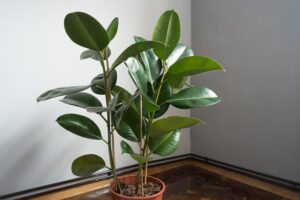
If you’re looking for a great way to bring the outdoors inside year-round, houseplants are a simple solution! With so many varieties to choose from, you can curate a unique selection of indoor plants that best suit your lighting situation while also providing many natural health benefits- even if you’re a beginner when it comes to owning houseplants.
Houseplants are natural air purifiers that help rid your home of indoor pollutants like carbon dioxide that build up to unhealthy levels in your home overtime.
By selecting plants from our list below to build your own indoor jungle, you can begin to naturally remove sources of indoor air pollution like formaldehyde, trichloroethylene, benzene, and xylene, and replace them with Co2 for a happier and healthier lifestyle.
Here’s our top 10 low-maintenance houseplants that cleanse the air (along with Wagners Greenhouse staff tips to best care for them)
10 BEST AIR PURIFIER HOUSEPLANTS
1. Rubber Plant (Ficus elastica)
Bred for toughness, the rubber plant will tolerate dim light (they will burn in direct light) and cooler temperatures. It is easy to grow and is best at removing the chemical toxin formaldehyde. Care Tip: For best results, water this air purifier plant every 1-2 weeks and try to provide filtered morning sunlight if you’re able.
2. Dracaena ‘Janet Craig’ (Dracaena fragrans)
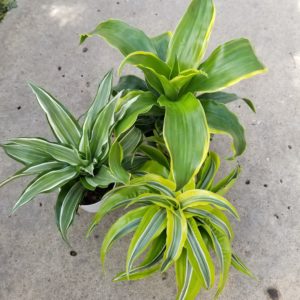
Also commonly known as the corn plant, the hardy, dark green leaves of the dracaena make it an attractive house plant that can grow quite tall. It is one of the best plants for removing trichloroethylene while also tolerating neglect and dim lighting. Perfect for new plant parents or housewarming gifts!
3. English Ivy (Hedera helix)
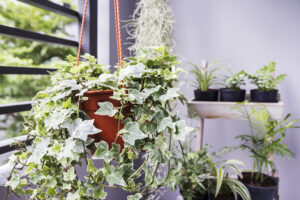
Also referred to as common ivy, English ivy is easy to grow and adapts to a variety of home environments. It’s appreciated as a houseplant for it’s ability to trail to attractive lengths. This plant does not like high temperatures and is unfortunately more prone to common pests such as spider mites than other plants. Care Tip: English ivy can also be toxic to cats and dogs so it’s best suited for a pet-free environment.
4. Pothos (Epipremnum aureum)

Arguably the easiest houseplant to care for, even seasoned plant enthusiasts appreciate it for its many varieties and beautiful heart shaped leaves. Pothos will tolerate lower light, humidity and temperature levels while being one of the best plants for removing all types of indoor toxins. Care Tip: While there are many different varieties of pothos, the color of the leaves will indicate the amount of light it prefers. The darker the leaves, the less light it requires to thrive.
5. Bamboo Palm (Dypsis lutescens)

Often called the areca palm or golden palm, this plant variety originates from Madagascar and will instantly give your space a tropical feeling. Best at eliminating benzene and formaldehyde, the bamboo palm likes part sun to part shade. Care Tip: if you typically neglect your houseplants, be warned that this variety doesn’t take well to lack of water. You’re better off slightly over watering than underwatering the bamboo palm. Investing in a moisture stick to check soil water level will help!
6. Boston Fern (Nephrolepis exaltata)
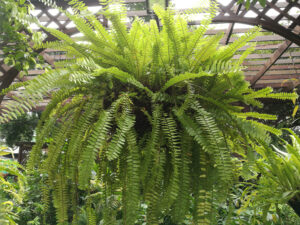
Ferns are one of the oldest groups of plants best known for their ability to filter out xylene, toluene and benzene pollutants. As a houseplant, it requires a bit more attention than others as it prefers frequent watering and misting to mimic the humid environment of its South American home. Care Tip: Place an indoor humidifier near this plant to easily provide the humidity levels it craves without the need for constant misting on your part.
7. Peace Lily (Spathiphyllum)
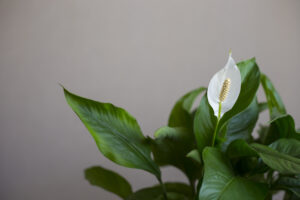
An outstanding ornamental foliage plant for beginners and plant experts alike. The peace lily excels in the removal of alcohols, acetone, trichloroethylene, benzene and formaldehyde. It does best in indirect, medium-to-low sunlight. Care Tip: The peace lily is another houseplant that is toxic to cats and dogs. Keep out of reach of pets to avoid unintentional poisoning.
8. Spider Plant (Chlorophytum Comosum)
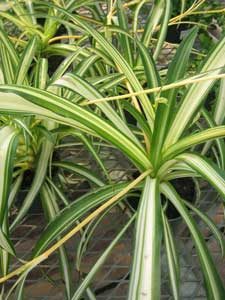
One of the easiest houseplants to grow and also simple to propagate its often abundant pups, the spider plant is a natural at absorbing carbon monoxide and formaldehyde while decomposing benzene and nicotine. One plant in a 200 square foot room is enough to be an effective air filter. Care Tip: Bright light is best to encourage the growth of spiderettes or “pups” for aesthetics and propagation.
9. Snake Plant (Sansevieria)
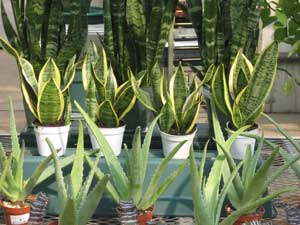
An evergreen plant with stiff, vertical leaves that’s knows for it’s nickname, ‘mother-in-laws tongue.’ One of the most drought tolerant plants that’s extremely tolerant of low light and irregular/infrequent watering. It removes benzene and passively absorbs formaldehyde. They make great statement floor plants and are slower growers than most easy-care houseplants, so do be patient.
10. Weeping Fig (Ficus Benjamina)
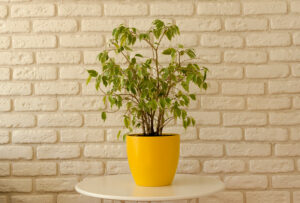
This flowering tree, native to Bangkok, is great at removing benzene and formaldehyde but requires a little more attention. It prefers bright, filtered light, frequent misting and needs to be placed away from drafty areas in your home. Over watering this can cause the leaves to yellow and fall off, only water when the top two inches of soil is dry. Care Tip: These plants will often be sold with braided roots for decorative appeal, unbraid the roots carefully to give this plant the best chance at success.
Air Purifying Houseplants from Wagners Greenhouse
Ready to start building your dream jungle and removing toxins from your home naturally? Learn more about the houseplants mentioned in this blog or inquire about products, availability and hours by contacting Wagners Greenhouse today! Our staff is happy to help you and your family live a healthy lifestyle with the addition of houseplants in your space.
